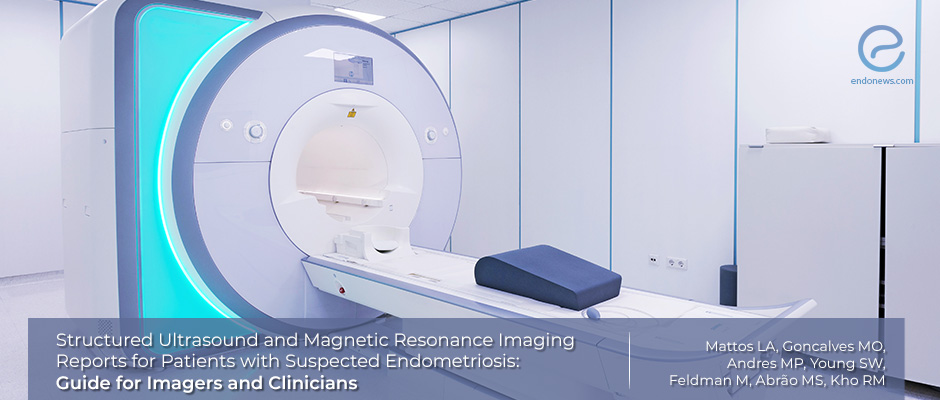A guide on the Assessment of Pelvic Endometriosis Imaging
Apr 16, 2019
Reporting US and MRI Findings for the Assessment of Endometriosis
Key Points
Highlights:
- This article aims to offer suggestions on the imaging of endometriosis with an emphasis on structured reporting for ultrasound (US) and MRI.
- For an appropriate treatment and to minimize delay in diagnosis, the use of imaging modalities that accurately map disease involvement is critical.
- A complete pelvic imaging evaluation accompanied by a structured and informative report requires the radiologist and sonographer to understand the disease with the latest strategies.
- Thus the proposed structured imaging report provided here can be a helpful tool that allows meticulous patient counseling and thorough treatment planning.
What’s done here?
- A multicenter group composed of expert clinicians, surgeons, and radiologists from in Sao Paulo, Brazil, the Mayo Clinic, Arizona, and the Cleveland Clinic, Ohio, present their views in imaging and management of patients with endometriosis.
Key results:
- MRI and US provide unique advantages in the diagnosis and evaluation of endometriotic lesions.
- A specialized imaging protocol and standardized reporting method tailored to the evaluation of endometriosis are critical for optimal treatment planning and to minimize delay in the diagnosis.
- US assessment of the posterior cul-de-sac should be performed because it is helpful in operative planning.
- The location, extent, and distance of endometriotic lesions from key anatomic locations should be summarized in a structured manner.
- The proposed reporting format is provided in detail in the article.
Limitations:
- Several anatomic locations including nonpelvic organs, such as the abdominal wall, hepatorenal space, diaphragm, and the pleura were not included in the article’s description of a structured report due to the rare incidence of endometriosis in these areas.
Lay Summary
Endometriosis is a disease whereby ectopic endometrial-like tissue invades and survives outside of the endometrial cavity. While biopsy-proven confirmation of endometriosis during laparoscopy has been considered the gold standard for diagnosis, non-invasive imaging modalities are increasingly being utilized for preoperative planning.
A multicenter group of clinicians, surgeons, and radiologists from Sao Paulo, Brazil, the Mayo Clinic, Arizona, and the Cleveland Clinic, Ohio, published an article in The Journal of Minimally Invasive Gynecology in order to highlight the radiologic characteristics, advantages/disadvantages, and development of non-invasive imaging for endometriosis.
Ultrasound (US) and Magnetic resonance imaging (MRI) are imaging modalities that are useful in the diagnosis of endometriotic lesions. Recently, studies have shown that MRI and US are clinically useful in the diagnosis of Deep-Infiltrating Endometriosis (DIE) and endometriomas.
The US is especially useful in the assessment of pelvic organ adhesions through dynamic and interactive manipulation during the study. According to this article, the US is also better than MRI in identifying small intestinal lesions, especially those which are close to the sigmoid and ileocecal region due to image distortion from peristalsis.
For each compartment of the pelvis (anterior, middle, posterior) the authors have outlined specific and formatted information that should be provided in the imaging report. For example, evaluation of the middle compartment, which includes the uterus, ovaries, and fallopian tubes should check for the presence of endometrial gland thickening, adenomyosis, mobility of the ovaries (if also performing the US), adhesions, and size of the tubes. All of these characteristics should be added to the radiology report for optimal treatment planning.
"To minimize delay in diagnosis and provide appropriate treatment, the use of imaging modalities that accurately map disease involvement is critical. Complete pelvic imaging accompanied by a structured and informative report not only requires that the radiologist and sonographer understand the disease and the latest clinical and surgical strategies but also necessitates a close communication and interaction between clinicians and surgeons to optimize patient outcomes" concluded the experts.
Research Source: https://www.ncbi.nlm.nih.gov/pubmed/30849475
endometriosis imaging MRI US

